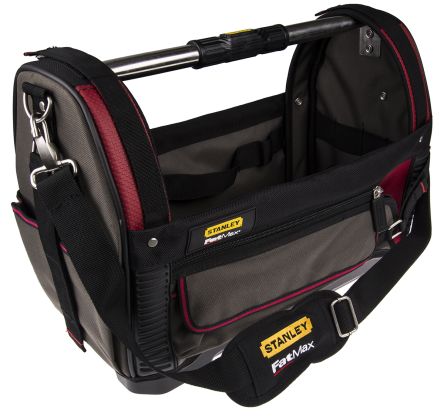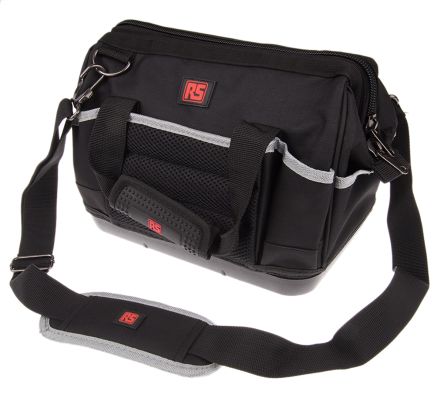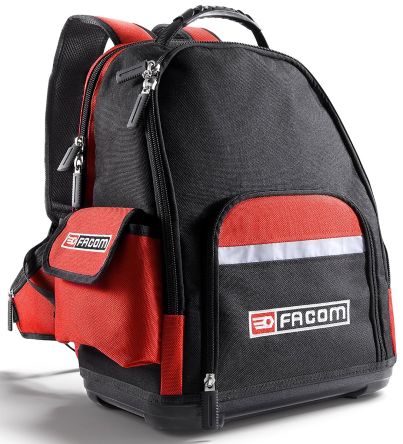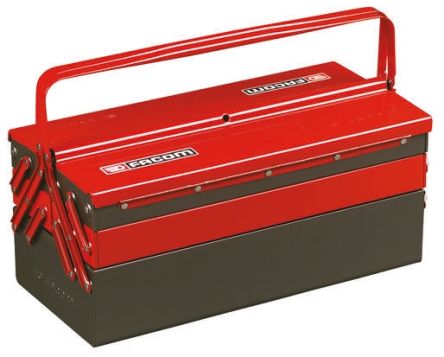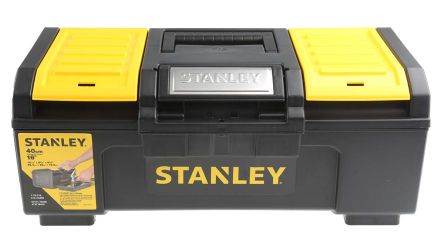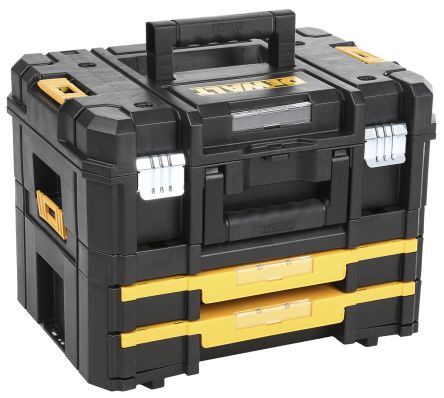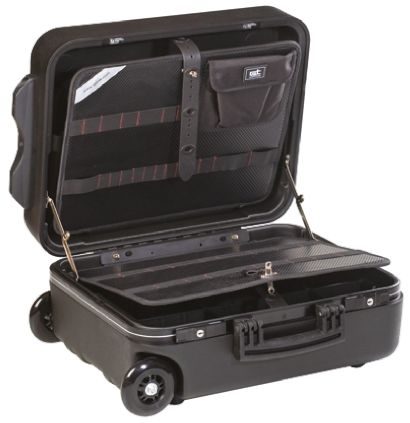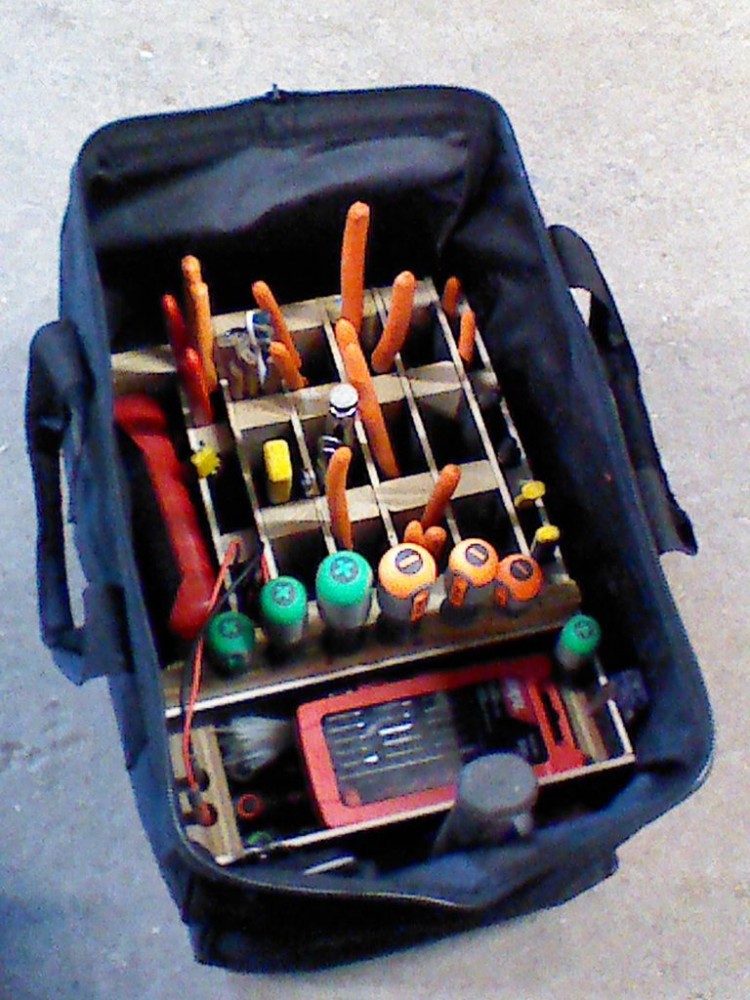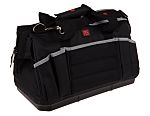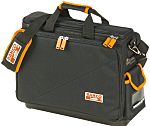|
|
What is a Tool Bag?
Tool bags are used in different industries to store and transport tools while helping keep them organised and accessible. Overall, they’re designed to keep tool kits safe, secure, and ready for use.
They add comfort and ease to jobs by holding essential items, and are available in a variety of types and sizes, including tote, shoulder, backpack/rucksack, holdall and canvas. They’re also available in a range of different materials, including leather, metal, fabric and plastic.
Examples of these can be found here:
What's the best way to carry tools?
Tool Bags vs Tool Boxes
Here are some of the pros and cons for both options:
Tool Bag pros
-
- They take up less space as they’re not as rigid
- More lightweight than a lot of toolboxes
- More durability/malleability when stored in small spaces or dropped on the floor
- Capable of expanding to offer larger amounts of space for tools
- Straps free up the use of hands
Tool Bag cons
-
- They don’t provide as much protection to the tools inside
- Not as effective for organisation
Tool Box pros
-
- More durability
- Better organisation capabilities with different compartments
- Large tool cases are available with wheels, ideal for carrying heavy items
- They offer more protection to tools
Tool Box cons
-
- While they have different compartments which are good for organisation, only tools of a certain size can be stored
- Tend to occupy a lot more space
- Some only feature a handle, so moving around various locations is more cumbersome
Therefore the best solution depends largely on the application and how many tools are being stored or transported.
How to organise tools and hardware
When stored properly, tools will last a long time as they’re not at as much risk of damage or loss compared to when they’re left lying around.
In terms of storage, tool bags often feature a large internal pocket, multiple small internal pockets, and various external pockets to hold items of different sizes.
However, while they have the capacity to store a large number of tools, they don’t always provide the best organisation – meaning people resort to chucking tools into whichever pockets or compartments they’ll fit. This can lead to being disorganised, and items either get lost or damaged, plus a lot of time is wasted searching for something right at the bottom.
First-Order Retrievability
First-Order Retrievability is the concept of never having to move a tool in order to get to another one – providing a faster and more efficient way of working.
If a tool bag or toolbox setup is designed with a First-Order Retrievability mentality, everything inside is organised so it’s visible and easy to access.
It’s a concept which was popularised by Adam Savage, co-host of Discovery Channel's programme MythBusters.
Compartments can be designed to organise the contents inside, so almost all the tools are standing vertically for quick visibility and easy access. The pictures below show how this can be achieved:
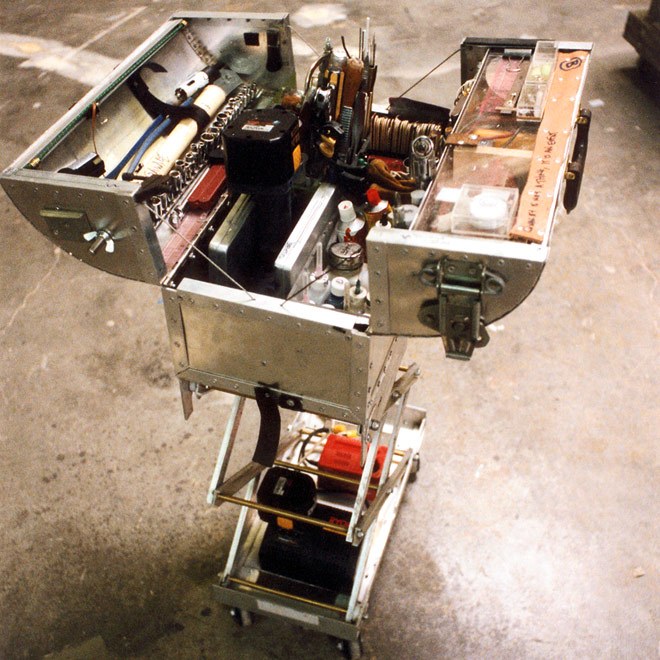 Adam Savage's First-Order Retrievability toolbox |
|
Different types of Tool Storage
There’s a wide range of tool storage and transportation solutions available, but some are better suited to certain industries and applications. Further information on each can be found below.
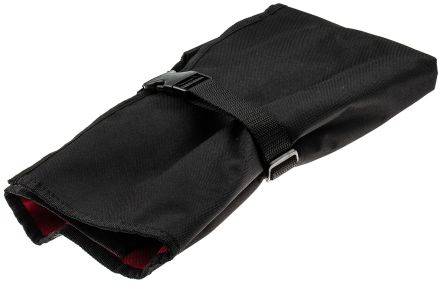 Tool Roll |
For Wrenches
An ideal option for storing and transporting wrenches is a tool roll. These feature individual pockets to hold tools and can be easily rolled up and opened out – offering a portable and lightweight alternative. |
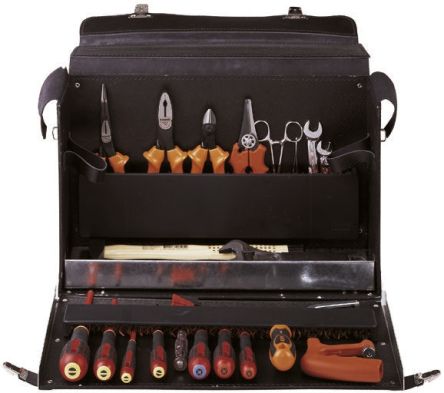 Electricians Tool Kit |
For Electricians
For any application, it’s important that tools are protected in a durable, comfortable and spacious bag. There’s a wide range of types available on the market, but specific types for electricians are accessible |
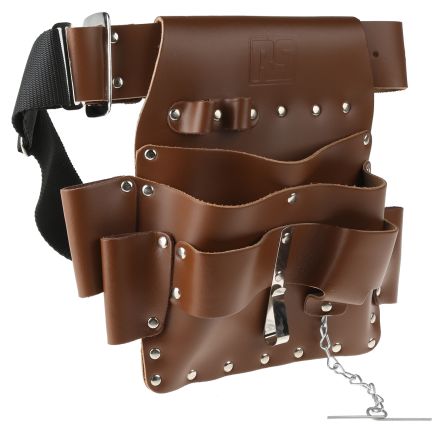 Tool Belt |
Tool Belts
Tool belts are comfortable and portable. However, when fully loaded, they can become heavy and cause strain to the back and hips. To help prevent this, padded belts are effective, as well as suspenders to help distribute the weight more evenly across both shoulders. They’re an ideal choice for carpenters, as they allow tools to be carried around a job site while keeping hands free for activities. |
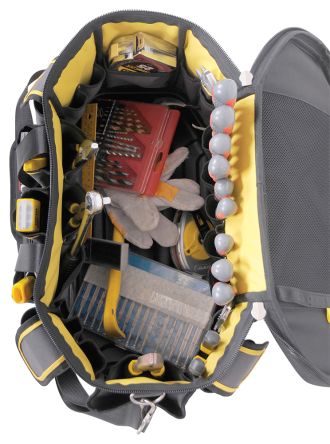 Bags with Compartments |
For PlumbersConvenience is an important feature that plumbing and heating engineers look for in a tool bag. A bag which is compartmentalised is ideal, with small zip pockets and pouches to hold loose bolts and drives which can easily get lost. Ones boasting a shoulder strap are good, and for even more comfort, a padded shoulder strap will cushion the weight of the tools inside |
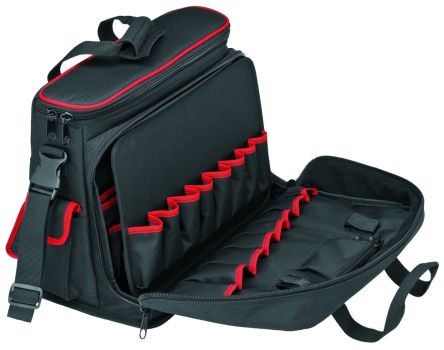 Multi-pocketed Tool Bags |
For HVACFor people working in the air conditioning and heating sector, they need something that can withstand the toughness and unpredictability of the environment. As well as that, good organisation is required because of the many different types and sizes of tool required for the job. HVAC workers use tools such as wrench sets, tape measures, pliers and screwdrivers, as well as basic equipment such as thermometers, flashlights and electrical instruments. A bag which stores and organises tools is therefore essential – preferably ones which are multi-faceted and multi-pocketed. |
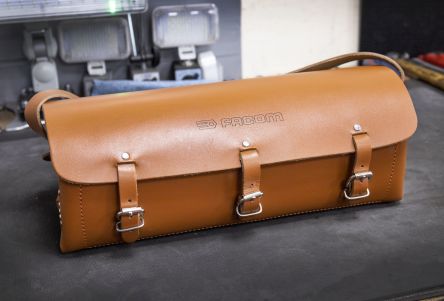 Motorcycle leather tool bags |
|
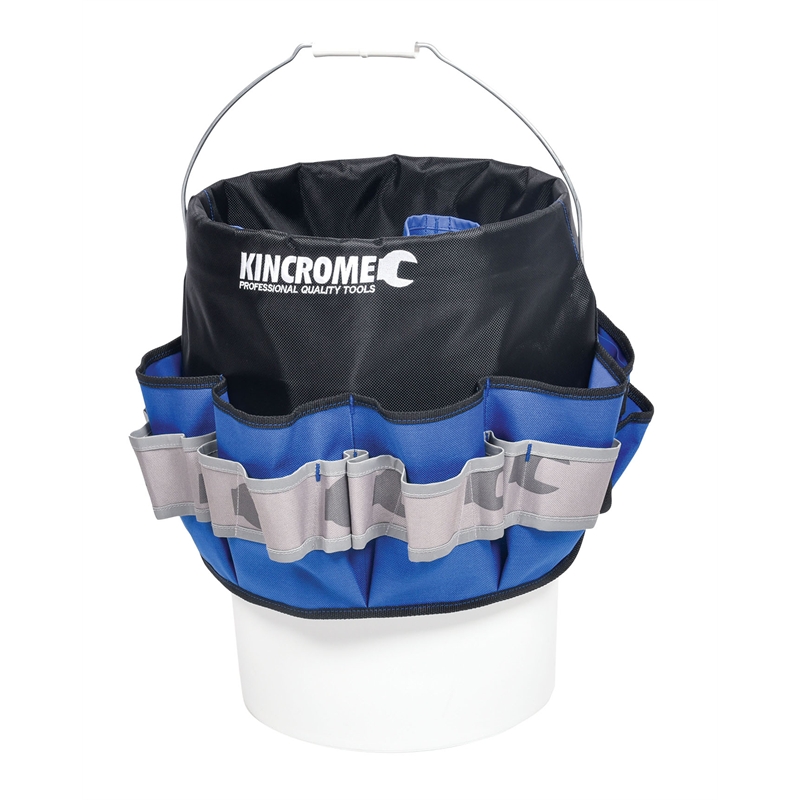 Bucket Tool Bags |
For BucketsThese feature internal and external tapered tool loops to hold the tools inside and outside of the bucket, with small pockets to contain littler items. |
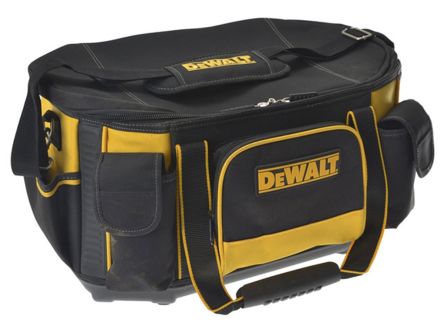 Open Top Tool Bags |
For WeldersBags used for this application ideally have an extra-wide mouth opening for quick access, while a spacious interior has enough room for equipment such as helmets, jackets, gloves or grinders. It should be made from strong material so it’s durable, with small pockets included to help organise small tools and pieces of equipment |
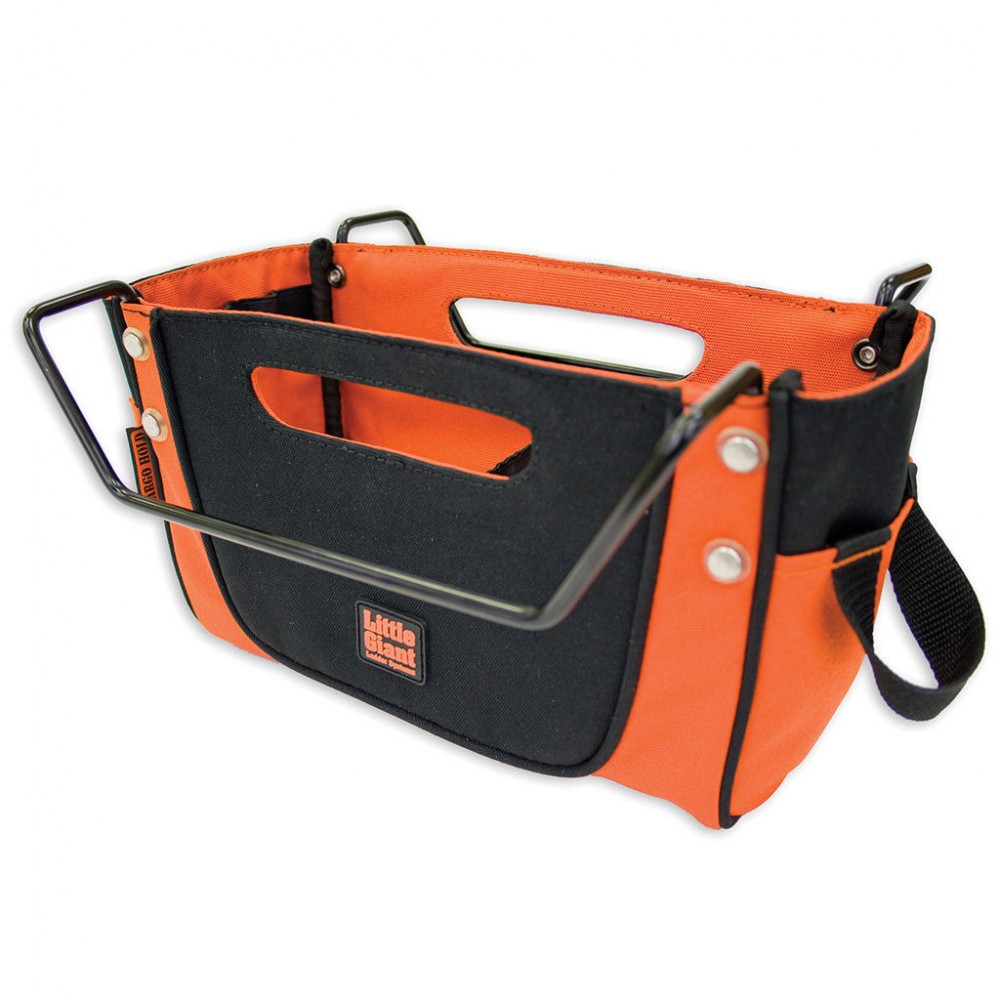 Ladder Tool Bags |
For laddersBags with handles aren’t suitable for this type of task, as hands should be kept free for increased safety and efficiency. Those designed for use with ladders provide extra convenience to workers by reducing the need to climb up and down to get a tool or component. They easily attach to a ladder and have various pouches to hold tools at the right level. |
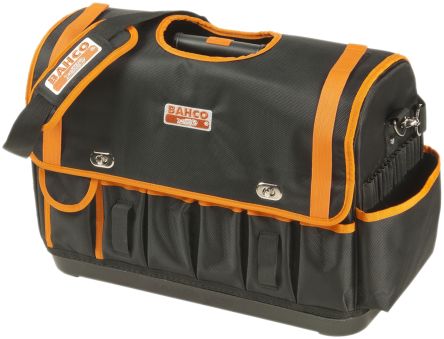 Hard Bottom Tool Bags |
Hard bottomBags can easily break due to the large amount of weight they’re carrying, particularly on the bottom. Replacing them frequently can be costly – so investing in heavy-duty and high-quality products is ideal. Those with waterproof bases are even better. If the tools being transported are heavy, it could be worth investing in one with a hard base, so it can resist a lot more tension and weight. |
Product spotlights
The best one to use largely depends on the application and the different requirements for the job.
Here are some of the best-selling brands – click through to see the wide range of products available:
